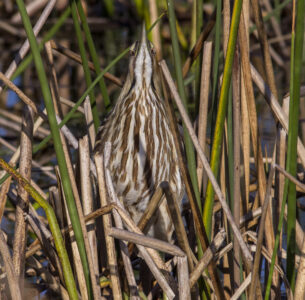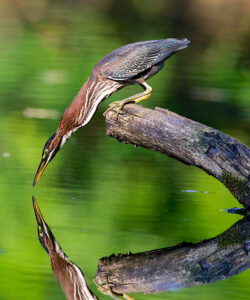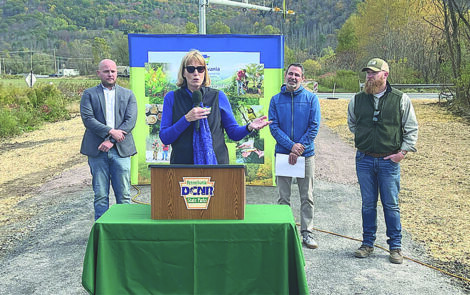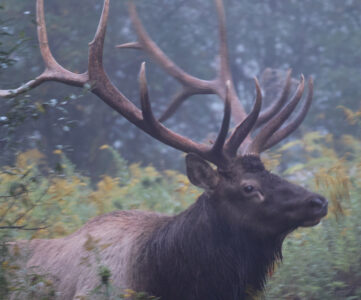Finding your patch to watch birds all year long in PA
- PHOTO PROVIDED An American bittern is shown in reeds in this photo by Sandra Blair which won a 2021 Audubon Photography Award.
- PHOTO PROVIDED A green heron is shown looking to catch a fish as its perched on a log in this photo by George Etter which won an Audubon Photography Award in 2015.
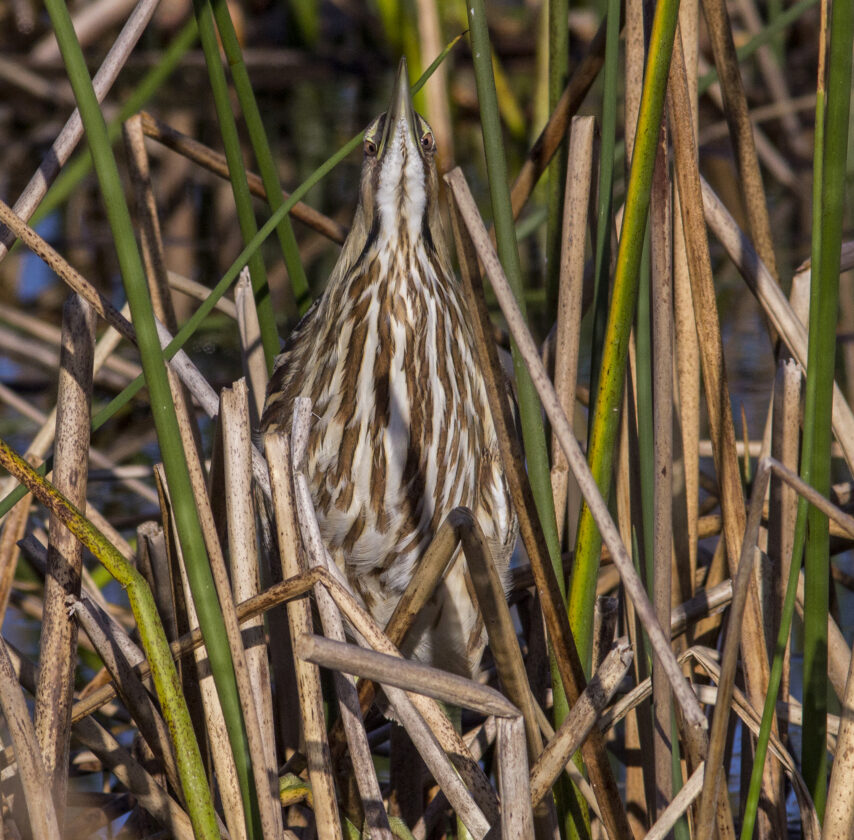
PHOTO PROVIDED An American bittern is shown in reeds in this photo by Sandra Blair which won a 2021 Audubon Photography Award.
I want to sing the praises of an intense kind of birding experience: having a patch. Your patch, in birding parlance, is a spot you visit regularly, not because you think you’re going to see anything particularly noteworthy, but because you’ve chosen it as a place you want to get familiar with.
By visiting your patch often, you’re able to observe what birds are residents and which are just passing through. You get to familiarize yourself with the birds you see over and over. That makes it a lot more obvious if something new shows up.
This year, I decided to start birding a patch of my own. My patch is a local park that I visit every Saturday afternoon after my volunteer shift at the animal shelter. The park consists of two man-made lakes that abut a marsh area. There are native trees, such as cedars, sweetgum, pines, maples, and oaks; invasive plants such as autumn olive and wisteria, phragmites around the marsh; and flowers like rose mallow and swamp milkweed.
The lakes are stocked, so there are a lot of people fishing for fun, and I pick up abandoned fishing line. There are also tons of introduced red-eared and yellow-bellied slider turtles, probably the descendants of pets that were abandoned at the lakes years ago.
By visiting my patch, I get to observe the change of seasons in one spot week by week. In winter, the lakes attract migrating ducks like hooded mergansers, ruddy ducks, bufflehead, and gadwall. As the weather warmed up, one hooded merganser, a young male, stayed late into June, long past the point he should have moved on.
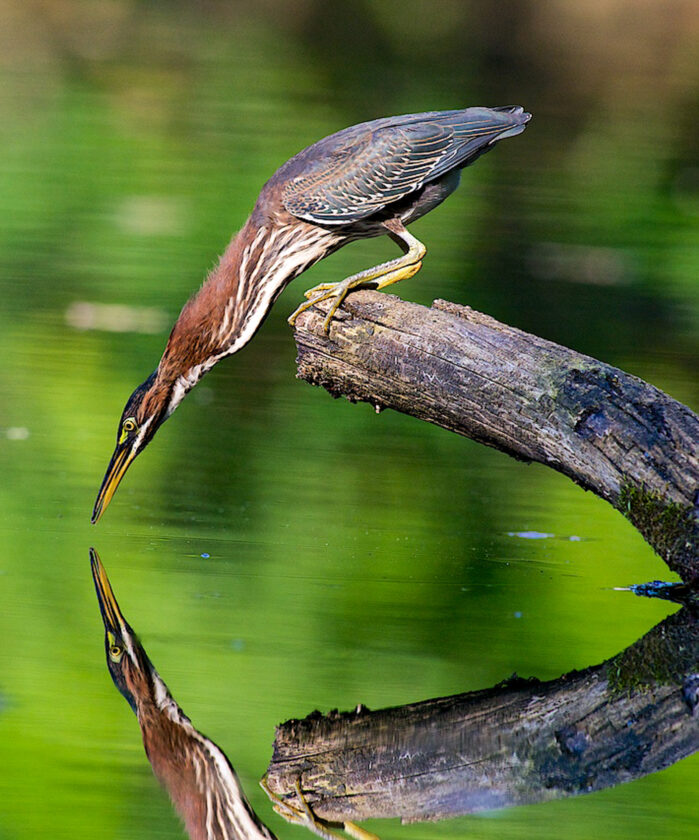
PHOTO PROVIDED A green heron is shown looking to catch a fish as its perched on a log in this photo by George Etter which won an Audubon Photography Award in 2015.
Because he was the only hoodie still around, I knew I was seeing the same bird over and over, and I got really fond of him.
In spring, American robins came back in full force, along with migrating warblers; I got so used to the zeet-zeet-zeet sound of blackpoll warblers that I started to recognize it without having to look up. I also got very familiar with the loud and persistent song of warbling vireos, which love to hang around near water and nest by the lake. Baltimore and orchard orioles moved in and I found multiple nests for each species.
Along with the orioles, some of the other nests and baby/teenage birds I found during nesting season included grackles, swallows, eastern kingbirds, sparrows, warblers, kildeer, red-winged blackbirds, wrens and oh-so-many robins. There were also Canada goose goslings and mallard ducklings. It was such a treat to find so many of these birds, and it really was down to the repeat visits and getting used to where to look.
Another treat was during May when an American bittern stopped by the marsh. This species is sneaky and silent and spends most of its time pretending to be a reed (in between hunting for food). Bitterns are commonly around, but considered rare because they’re so hard to spot.
It’s really exciting.
The summer was excruciatingly hot and the birds felt it too. In the afternoons, they were mostly hiding, but I still saw swallows and swifts flying over the lakes, along with tons of dragonflies. Herons toughed out the heat, and I had a close encounter with a juvenile green heron that didn’t hear me coming — I was only a few feet away, and I watched it fishing and even got a picture.
It’s the first week in September as I write this, and last Saturday I saw my first early migrant: I was counting mallards for my checklist when I realized one of them was very small. Looking harder, I realized it wasn’t a mallard at all — it was my first green-winged teal of the season.
I definitely wasn’t expecting to see one so soon.
In the coming months, the catbirds will all leave for their winter hangouts. Many of the red-winged blackbirds will too. The kingbirds, which I got to watch catching bugs over the lakes in the summer and bringing back snacks for their hungry kids, have already left.
But more migratory ducks will start coming in to replace them. My late-staying hooded merganser from the spring might be back, too, all grown up and unrecognizable in his adult plumage — the gorgeous black and white mohawk that gives these ducks their name. The winter songbirds like dark-eyed juncos and ruby- and golden-crowned kinglets will be arriving soon, and I can’t wait.
That’s the joy of having a patch. When you show up over and over, you never know what you might see.
Julie Cramer-Le is a transplanted Snyder Countian, who found her love of birds and birding in New Jersey. She is in her fourth year as a serious birder, a passion she pursues in between her profession as social worker and volunteering for an animal rescue organization. Cramer-Le is a member of New Jersey Audubon.

